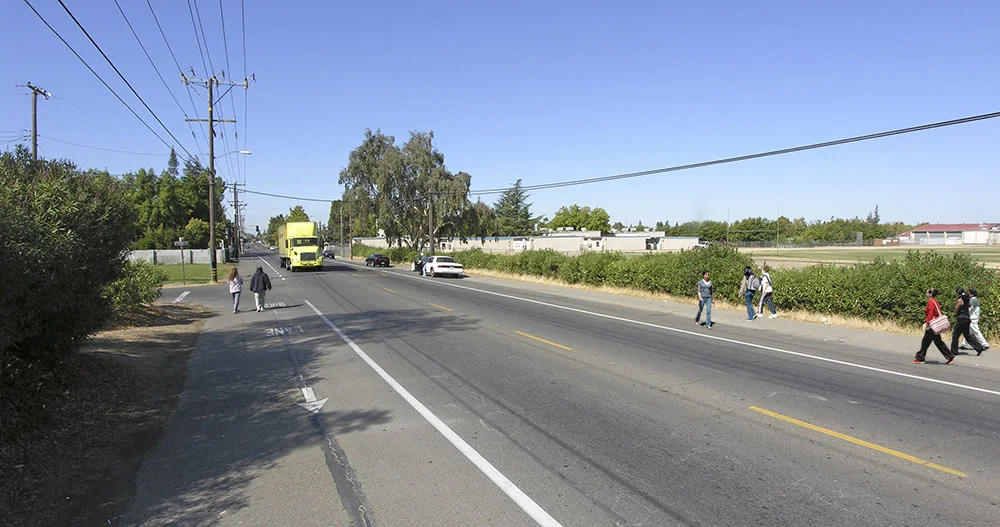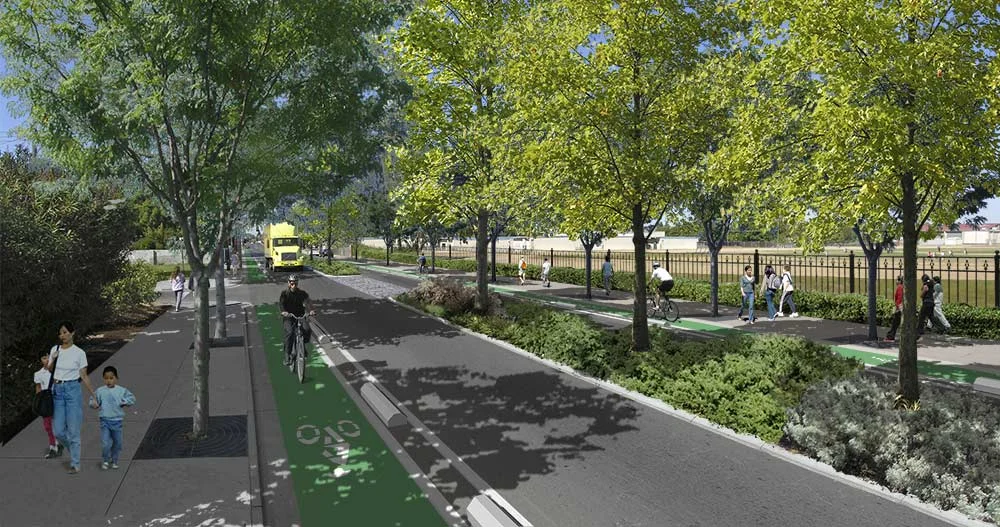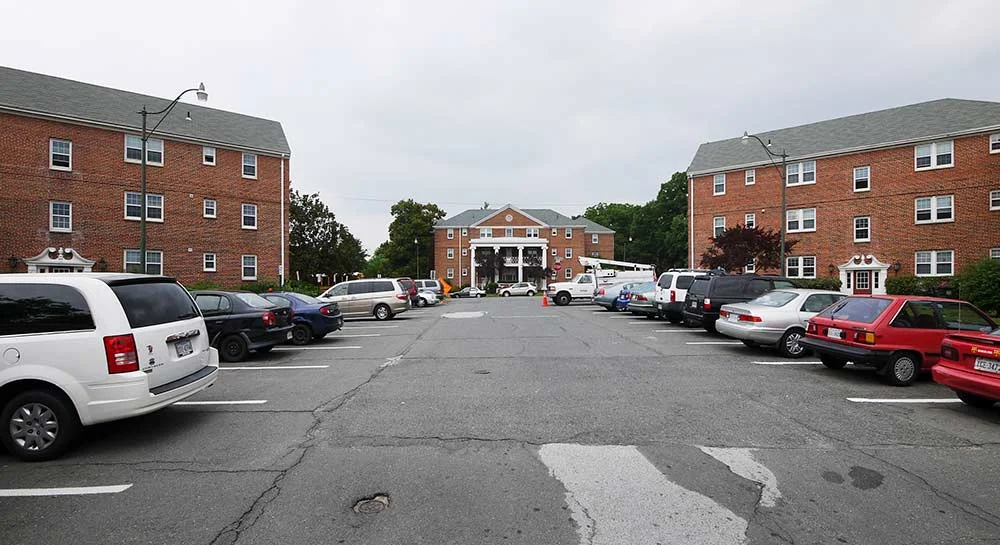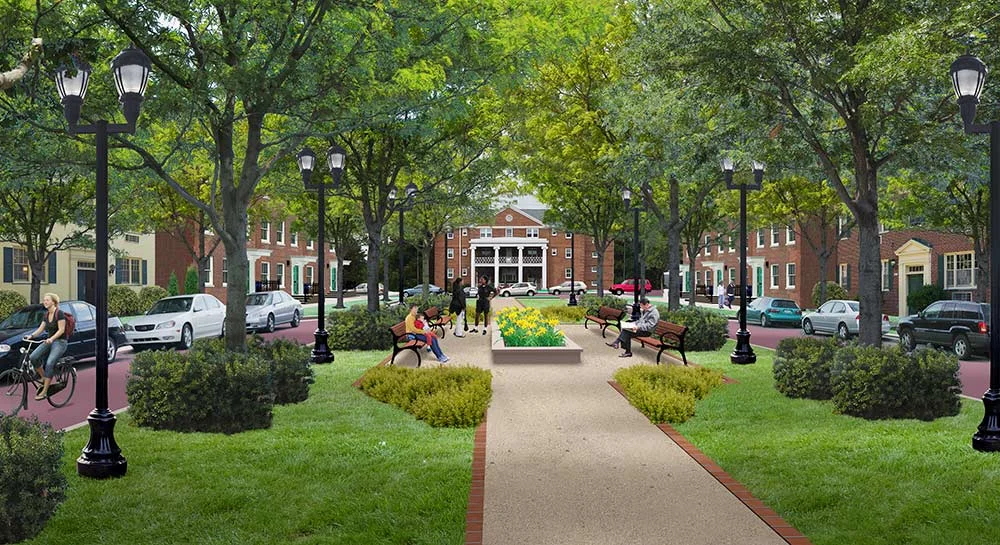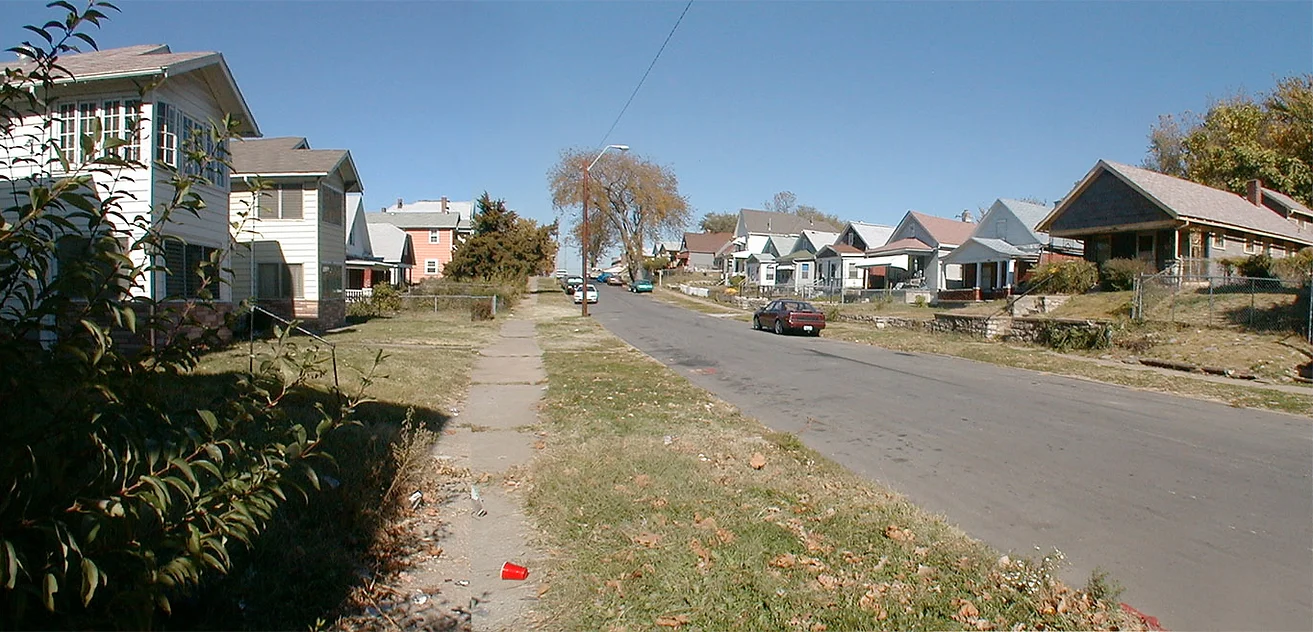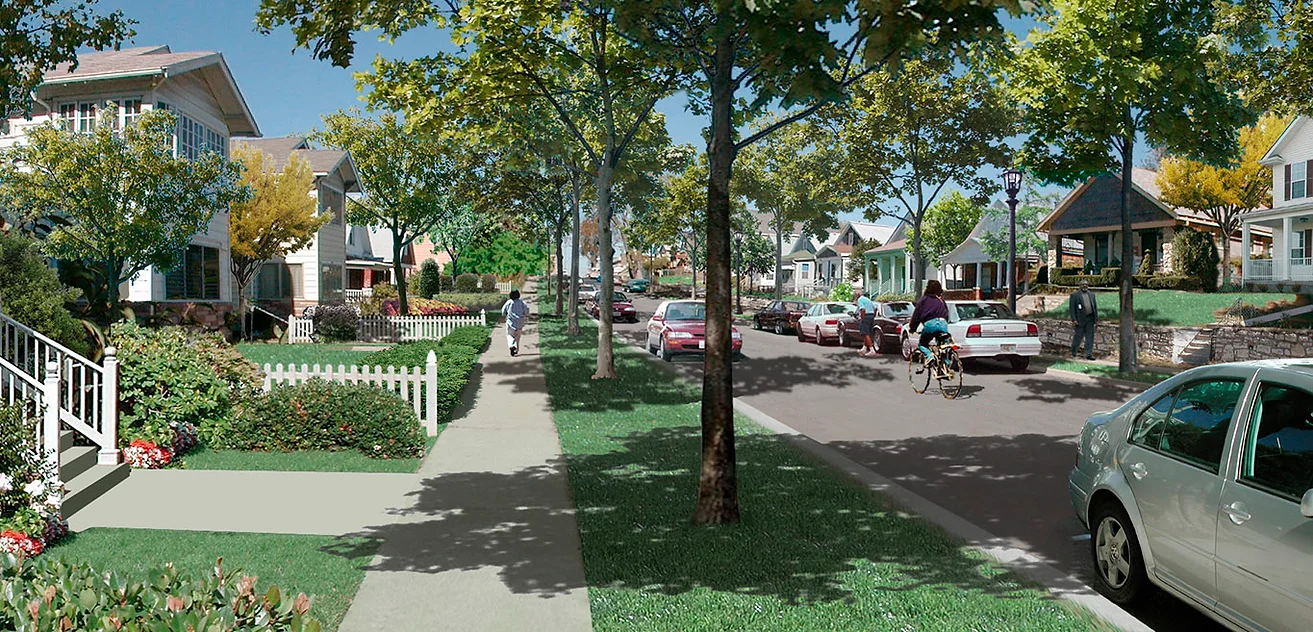Why We Need More Visionary Town Planners
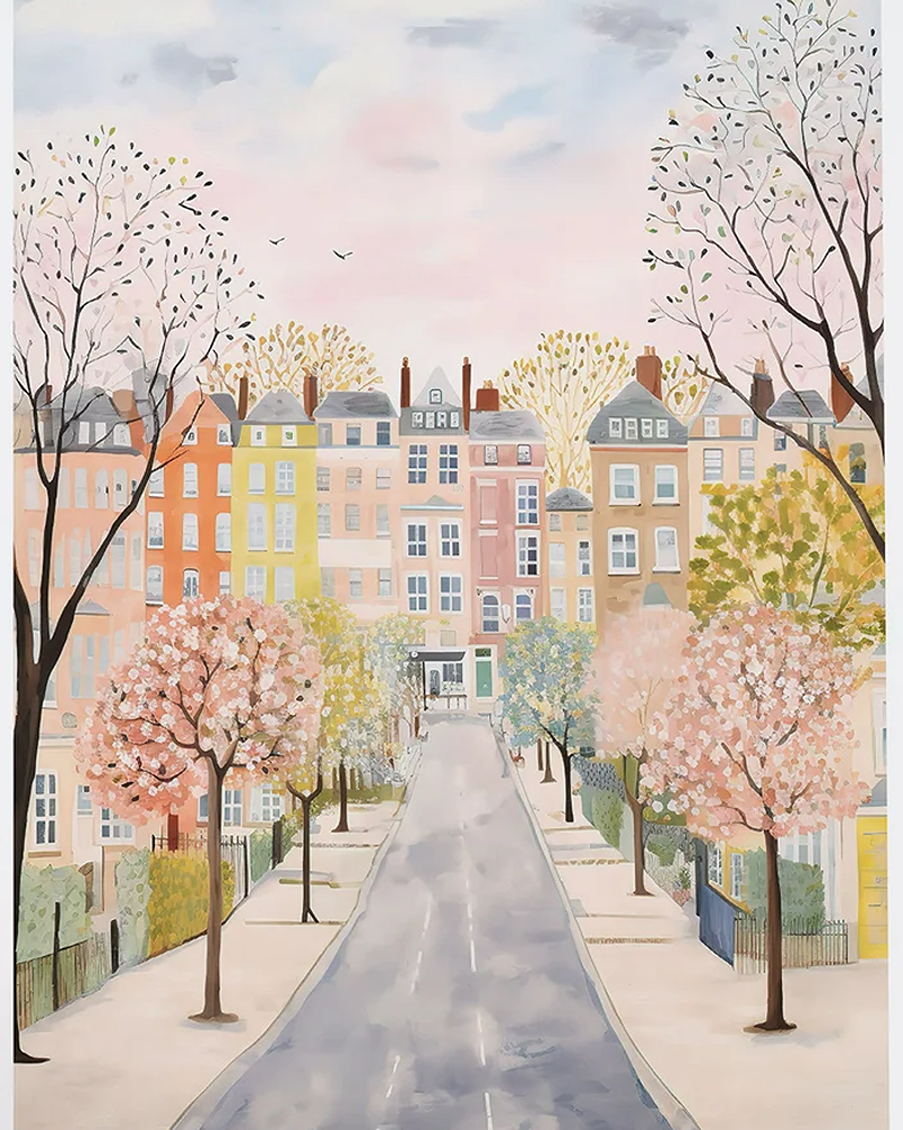
Town planners always say that they need more money, and then when they get it, they go and give permission to build out-of-town supermarkets, more roads and ugly buildings or statues.
Some say the Angel of the North not only causes road accidents, but looks like a Nazi propaganda statue.
Giving towns a beauty makeover does indeed cost money. But no more than it costs to keep places uninspiring and ugly.
There are more than enough willing volunteers to help dig up asphalt to plant trees and parks, use donated paints to pretty up buildings and remove graffiti, and create ‘walkable communities’ to be enjoyed by people, pets and wildlife.
Basic rules of New Urbanism town planning are to build streets on a grid system (so everywhere is easy to walk to) and people naturally ‘bump into each other’.
Pavements are widened and trees are planted, and areas built up to makeover stark empty boulevards (see before/after photos below). Buildings are no more than four-storeys high to foster community, and there is good free or cheap public transport.
Use no-dig gardening (and avoid netting, to help wildlife). Learn how to create gardens safe for pets and wildlife. Also read how to help stop birds flying into windows.
The problem with most town planners, is simply lack of vision. It doesn’t take a rocket scientist to know that USA town planners get it better. Some of their towns in New England are positively gorgeous, with white clapboard buildings and steeple churches, surrounded by trees of forests, pretty ‘main streets’ with indie gift shops, and no litter in sight.
Why can’t we do that here? England is increasingly a country of littered high streets with chain shops, mobile phone stores and empty buildings, surrounded by a sea of road traffic, fast food restaurants and noisy pubs full of people shouting at each other.
Examples of Good Town Planning

Andrés Duany is likely one of the world’s most inspiring architects and town planners. He has helped to create several ‘planned communities’ in the USA including:
Seaside, Florida – this affluent coastal town has a pristine beach, a pretty main stream, several indie shops and a gorgeous church, for people of all faiths. Inspired by old porch-style homes where people would swing and watch the world go by, at sunset.
Also in Florida is Anna Maria Island, where all the buildings measure three stories or less. This is known to be the rule (four stories or less) for ‘community planning’ so nobody feels isolated. It’s also a good rule for safety, to avoid more tragedies like Grenfell Tower.
Celebration, Florida – this town nearby (built actually by Disney corporation) is also worth a mention. It again has a nice Main Street with independent shops, a beautiful boardwalk to a nature park, and an Art-Deco inspired post office and cinema. This town is planned so the parked cars are hidden underground, so visitors never see them.
Mt. Laurel (Alabama) was also designed by Andre. The trees removed to make the town were then replanted (so none killed), and you can walk from the beautiful homes to the main street, filled with farmers’ markets and indie shops. There are two dog parks (one for oldies, one for boisterous pups). You can even walk to the fire station!
Copenhagen, Denmark used to be gridlock, but is now the world’s most walkable city. Jan Gehr took a few years to do this. He started by making the main street walking-only. Then gradually did the same to more surrounding streets, and brought in bike-hire stations. He also installed heated seats, to encourage locals to enjoy the centre, on winter Scandinavian nights.
Public for Project Places calls of the above ‘placemaking’. If people love where they live and feel a real affinity for it, they will look after it. They won’t drop litter on streets or in rivers, and are less likely to burgle each other’s houses or set abandoned cars on fire.
And creating such places just requires vision, not money. You can report eyesores like litter at Fix My Street. Councils have a legal responsibility to clear it on public land. For private land, they can serve Litter Abatement Orders (or clear it themselves, and bill the landowners).
So why when litter laws exist, do we still have towns where rivers and parks are literally choked with litter, often that has been there years?
Some litter-pickers have reported finds like Lucozade bottles and wrappers in public parks, that the dates suggest have been lying there since the 1970s? That’s not a lack of public funding – that’s council laziness and lack of vision, of how beautiful a town can be.
Town planning may seem like a boring job, but if done well, it’s a visionary way to transform where you live, using the same budget as now, just using more imagination and knowledge from New Urbanism architects.
How the Deep South Inspires Good Town Planning

If you look at the average uninspiring town planning for an English town or city these days, it pales into significance, when compared to the beautiful American city of Charleston.
The city is absolutely gorgeous, with pastel-coloured houses (even the local church is pink!), public water fountains cascading in green parks, a sandy coastline and historic public buildings holding public markets.
Everywhere you look there are cobblestone streets, colonial buildings and lots of trees.
Charleston is actually designed in the same layout as Bridgetown in Barbados, with many homes having covered porches that face south or west to catch the sea breeze, to keep cool on hot summer days.
Hampton Park is just outside the city, boasting 60 acres of old roses and seasonal flowers, and easily explored by foot or bike.
Oak trees in many areas are planted to provide shade, with the Angel Oak Tree around 400 years old.
‘The Gray Man’ is a local ghost on Pawleys Island. He is said to have appeared six times before major storms, to warn local people to prepare for bad weather.
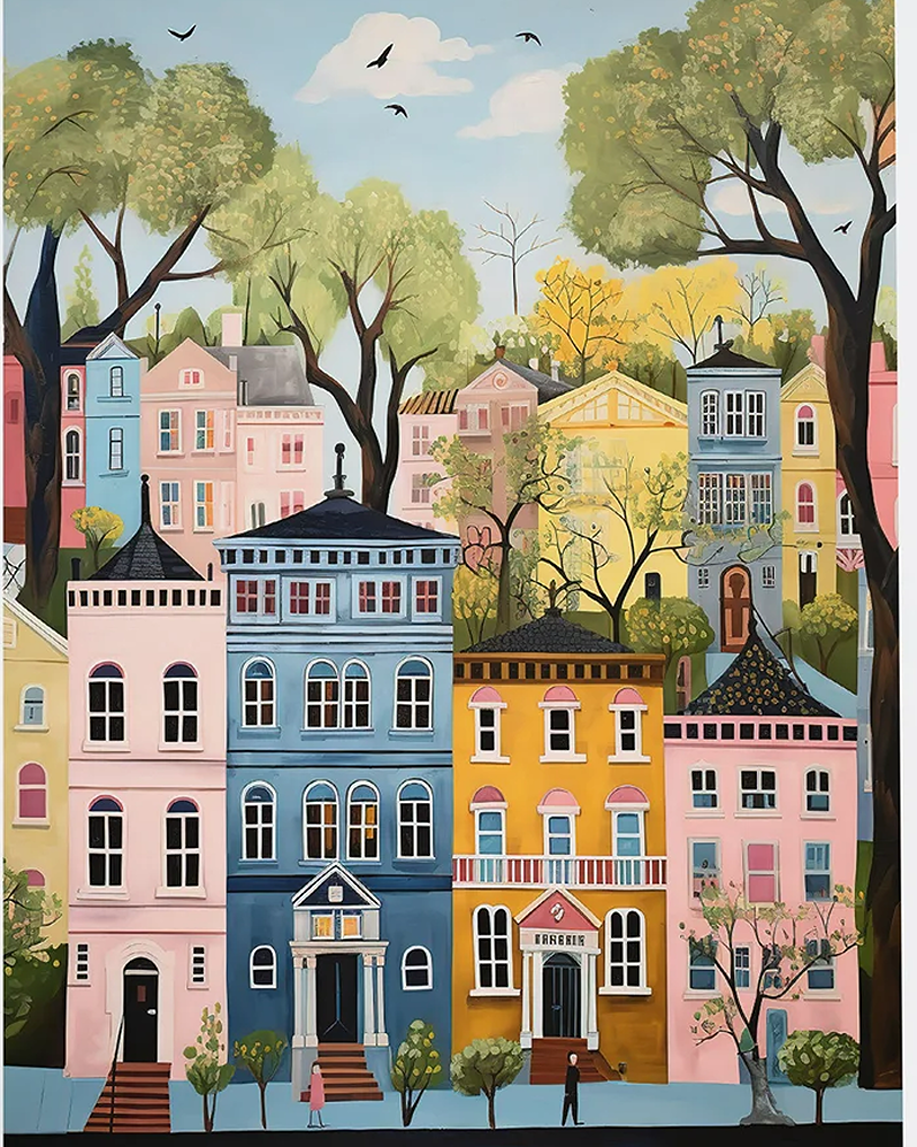
What can today’s planners learn from the Deep South?
- Disaster Preparedness: Build with floods and storms in mind. Raise homes, safeguard hospitals, and plan safe routes for evacuations.
- Inclusivity: Design public places for everyone. Parks and markets should feel open to all backgrounds.
- Heritage with Modern Needs: Keep what’s good – like shaded lanes and porches, but upgrade for today’s life: green spaces, walkable streets, and public transport.
- Respect for Nature. Don’t fight the land; work with it. Use native plants, conserve wetlands, and avoid building where water wants to go.
Digital Before/After New Urbanism Images
Urban Advantage is a free ‘online book’ for town planners, by an American who earns his living producing digital before/after images of what towns could look like by widening pavements, planting trees etc.
Take a look at these three before/after makeovers – it’s pretty addictive when you see what can be done!
